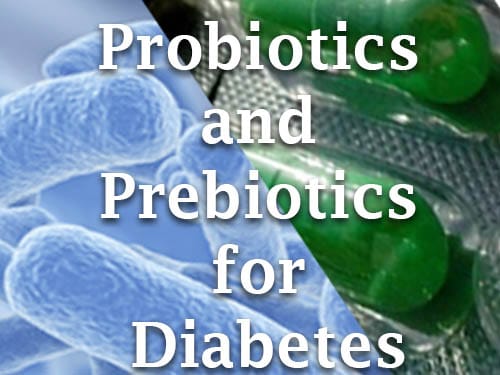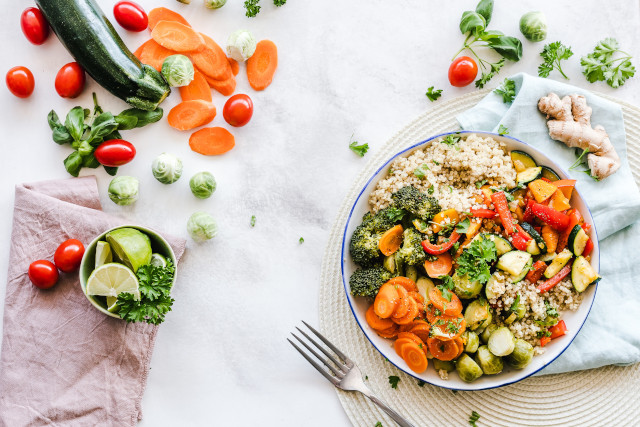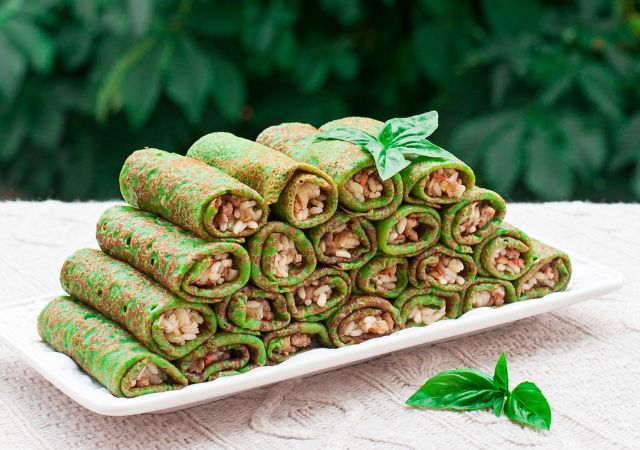
For holistic practitioners, the gut has always been central to health. In naturopathic medicine, for example, student physicians have long been taught to heal gut first—that health simply cannot be achieved without a healthy digestive system that can take in nutrients, digest them, absorb them and then eliminate the waste.
One of the first aspects of digestive health that is commonly addressed is the health of the microbiome—the collection of bacteria that live in our guts in a symbiotic and mutualistic relationship with us. Symbiotic mutualism is the phrase used to describe the mutually beneficial relationship between these gut bacteria and us.
Many people are surprised to learn that there are more bacteria in our bodies than our own human cells--some estimates suggest that there are 10 times as many bacterial cells in our body than our own cells! The microbiome affects overall health, weight and can significantly affect the risk of diseases such as heart disease, cancer, mental health, diabetes, obesity, stroke and other conditions., There are over 1000 different species of bacteria in the healthy microbiome.
In general, the more diversity that exists in the microbiome, the better it is for our health. The bacteria in our guts produce or help to produce vitamins, neurotransmitters such as serotonin that can affect mood and are critically important in training or educating out immune systems to respond to dangerous pathologic bacteria, viruses and other infectious organisms.[1]
To give just one example regarding the importance of the microbiome, when scientists transfer gut bacteria from thin, lean mice to the guts of obese mice, those obese mice begin to lose weight and over time, resemble the lean mice![2]
The Microbiome and Diabetes
A dysfunctional gut microbiome is implicated in both T1D and T2D. [3], [4] In T1D different populations of gut bacteria were linked to T1D susceptibility where in T2D, the gut bacteria appear to help maintain insulin sensitivity, control inflammation and affect hunger control mechanisms and liver function. Research has indicated that the transplantation of fecal bacteria form healthy, lean mice to mice with metabolic syndrome and insulin resistance can significantly improve insulin sensitivity.
This improvement was directly correlated with increased diversity in the gut bacteria as well as an increase in the gut bacteria producing certain bacterial byproducts, particularly a form of a short-chain fatty acid known as butyrate. Butyrate has well-documented roles in reducing inflammation, increasing nutrient absorption, functioning as an antioxidant and modulating the motility of the intestine (remember that the intestines have inherent movement, pushing nutrients and waste through the gut.)
For more information on diabetic management check these articles:
What are Probiotics and Prebiotics?
A probiotic is a micro-organism. Probiotics are usually bacteria, but probiotics can also be fungal yeasts. Probiotics protects the host (the human) from various infections by essentially crowding out disease-causing bacteria, other pathogens and viruses. In addition, evidence is growing that probiotics can help diminish the symptoms of and prevent disease, including diabetes.[5] Other disorders where probiotics are useful are inflammatory bowel disease (IBD), irritable bowel syndrome(IBS), diarrhea, allergic disorders, dental cavities, colic, the common cold and liver disease (to name just a few---hmmm….seems like those old-tyme naturopaths may have been right…).
There are three main ways to populate the gut-- through the environment (the bacteria and other microorganisms all around us), through your diet and by using supplements.
You don’t have to do anything special to get bacteria from the environment—they will find you! In fact, there is something called the Hygiene Hypothesis that states essentially that too much cleaning and disinfecting is the root cause for the increase in a number of different diseases. Put it this way—humans and all the bacteria on the planet evolved right alongside each other and we are just now scratching the surface of what the co-evolution means as far as our own health. For example, children who grow up on farms, are exposed to manure, play in the dirt and bring that dirt inside with them tend to have less allergies, fewer autoimmune diseases (including T1D), and fewer skin disorders such as eczema.
To get more probiotics in your diet, there are two types of foods that will accomplish this:
1. Fermented, unpasteurized: They have to be unpasteurized because pasteurization kills bacteria. Fermented foods include:
- Tempeh--fermented soybeans
- Kimchee-- fermented Korean cabbage
- Miso-- fermented barley paste
- Sauerkraut-- fermented cabbage
- Yogurt--fermented milk with active probiotic bacteria
- Kefir--fermented milk
- Kombucha-- black or green fermented tea with added fruit and spices
2. Probiotic foods.
- Leafy green vegetables such as kale, spinach, Swiss chard, and greens from mustard, collard, beet, turnip plants.
- Cruciferous vegetables: broccoli, Brussel sprouts, cabbage, cauliflower.
- These vegetables support the growth of healthy bacteria because of substances in the cruciferous vegetables that bacteria use to produce anti-inflammatory substances. Cruciferous vegetables are also believed to help prevent cancer.
- Cruciferous vegetables such as broccoli, brussel sprouts, cabbage, cauliflower contain substances known as glucosinolates. The glucosinolates are sulfur-containing chemicals. During digestion, the glucosinolates breakdown to form indoles, nitriles, thiocyanates and isothiocyanates. Indole-3-carbinol and sulforaphane have been the most studied of these substances, and have been found to inhibit the growth of cancer of the bladder, breast, colon, liver, lung, and stomach in lab animals. We also know that people whose diets include cruciferous vegetables tend to have fewer cancers than those who rarely eat them.
- Beans and legumes release short chain fatty acids(SCFA)—like the butyrate mentioned above. Beans and legumes are also high in fiber that can help support the microbiome
- Yogurt with active cultures
- Aged Cheese such as Roquefort, Bleu, Brie, Feta and Gruyére.
Prebiotics on the other hand, are essentially food for the probiotics, supporting their growth and reproduction. Prebiotics include fructooligosacchrides (FOS) such as inulin and galactooligosaccharides (GOS). These can be obtained through the diet or by using supplements. Prebiotic foods include:
-
- Chicory root
- Jerusalem artichoke
- Dandelion greens
- Garlic
- Leeks
- Asparagus
- Wheat bran
- Wheat flour and baked wheat products
- Bananas
For more interesting articles on diabetes check the links listed here:
Supplements
Some of the best known bacteria used as probiotics are strains of Lactobacillus such as Lactobacillus acidophilus and L. rhamnosus. Other commonly used bacteria are Bifidobacteria strains. A yeast, Saccharomyces boulardii is also a well-studied probiotic. If you are looking at buying probiotics, the following recommendations should make that search easier:
- Get a probiotic that contains many different strains of bacteria but at least contains L. acidophilus, L. Fermentum, L, rhamnosus, B. longum, and B. bifidum.
- Some products include a yeast, This yeast functions very effectively to help support and protect the gut bacteria, but should be avoided in those with IBS, especially if they have SIBO (Small Intestinal Bacterial Overgrowth).
- Only buy controlled-release forms. The stomach acid can kill the bacteria and in fact, that is one of the functions of stomach acid. But this also means that most of the bacteria will be killed by the acid before it gets to your gut. You want a form of probiotic that allows the capsule or tablet to dissolve after it has passed through the stomach. The controlled-released or enteric coated products do that.
- The form of the probiotic-- liquid, capsule, tablet or powder is not as important as the fact that they can survive the stomach acids.
- Check the expiration date—these are (or at least should be) live organisms.
- Make certain that the supplement contains at least 25 billion Colony Forming Units (CFUs).
- Check out the quality of the probiotic by checking with Labdoor—an independent testing and rating company.
- Look for a “USP Verified” seal.
- The USP is a non-profit analytic laboratory and checks the accuracy of the contents.
- Testing is voluntary—generally speaking if a company is willing to have its products independently tested, that tends to be a higher-quality product
- There is no commonly accepted dosage—talk to your physician and/or pharmacist for advice
For prebiotics, look for supplements that contain:
- Inulin and fructooligosaccharides (FOS) and galactooligosaccharides (GOS).
- Look for a “USP Verified” seal.
- There is no commonly accepted dosage—talk to your physician and/or pharmacist for advice
So those are the benefits of probiotics and biotics.
TheDiabetesCouncil Article | Reviewed by Dr. Christine Traxler MD on June 10, 2020
References
- http://www.ncbi.nlm.nih.gov/pubmed/23426535
- http://www.scientificamerican.com/article/how-gut-bacteria-help-make-us-fat-and-thin/
- Kostic, Aleksandar D., et al. "The dynamics of the human infant gut microbiome in development and in progression toward type 1 diabetes." Cell host & microbe 17.2 (2015): 260-273.
- Hartstra, Annick V., et al. "Insights into the role of the microbiome in obesity and type 2 diabetes." Diabetes care 38.1 (2015): 159-165.
- Sekhar, M. Sonal, and M. K. Unnikrishnan. "Probiotic research for diabetes prevention." Nutrition 31.1 (2015): 248.





